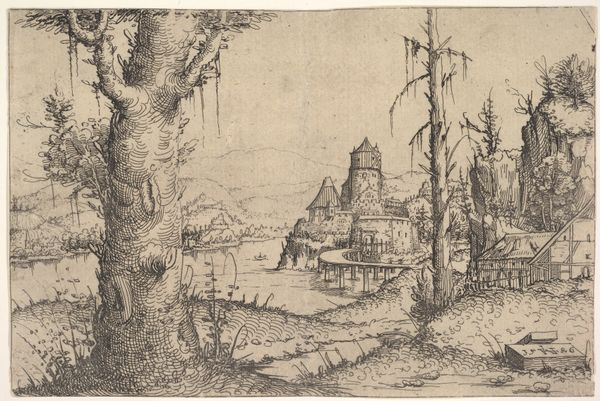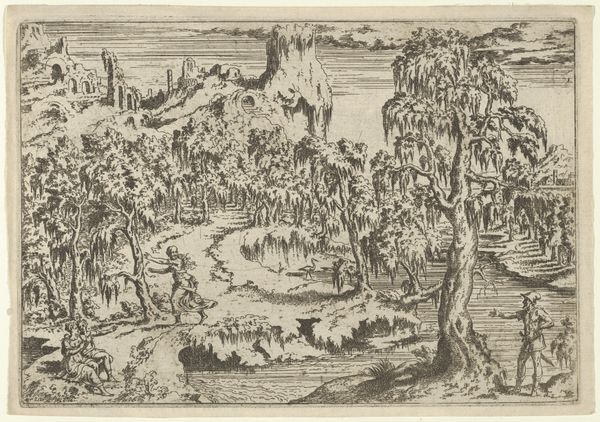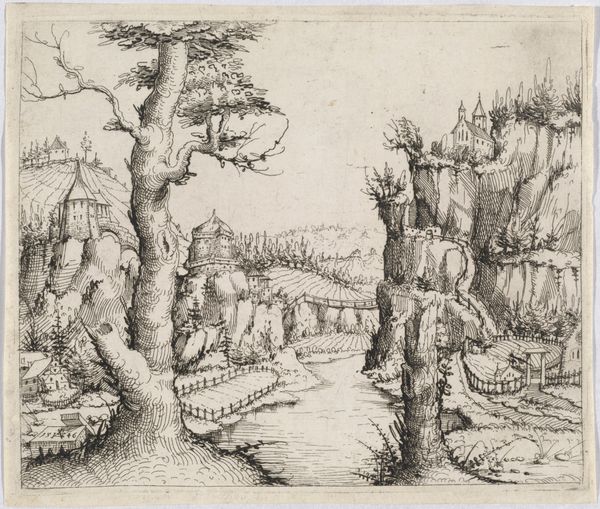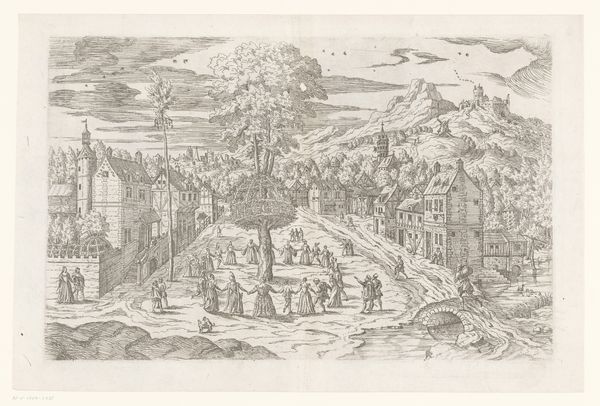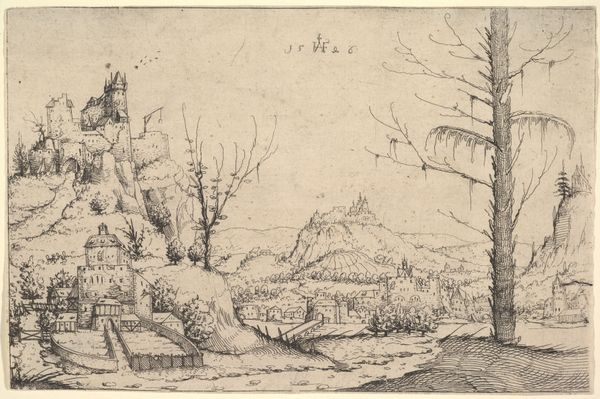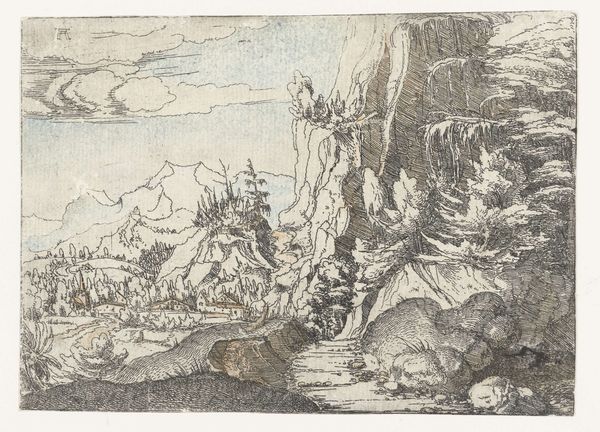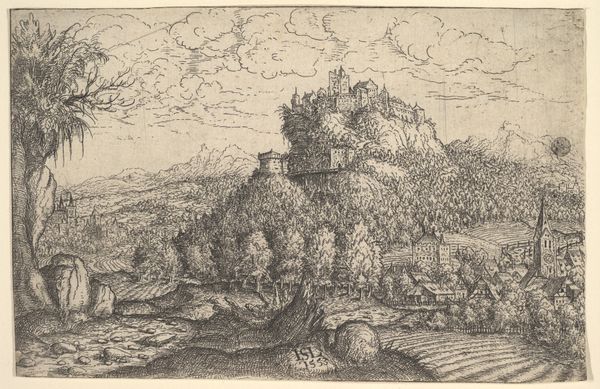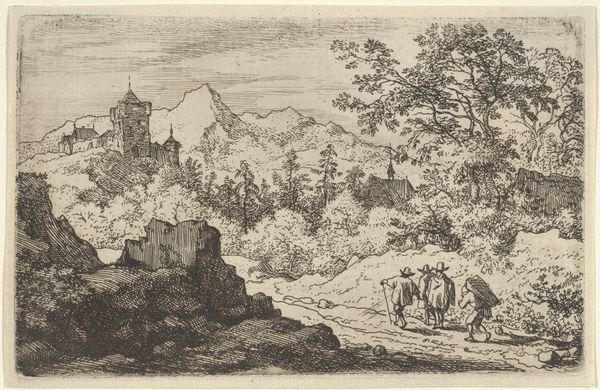
drawing, print, paper, ink
#
drawing
#
ink drawing
#
medieval
#
pen drawing
# print
#
landscape
#
paper
#
ink
#
line
#
northern-renaissance
Dimensions: Plate: 2 7/16 x 1 3/4 in. (6.2 x 4.5 cm) Sheet: 2 9/16 x 1 15/16 in. (6.5 x 5 cm)
Copyright: Public Domain
Curator: Standing before us is "Landscape with High Rocks and Fortresses" by Augustin Hirschvogel, created in 1546. This captivating drawing employs ink on paper to depict a sprawling landscape dominated by imposing rock formations and fortified structures. Editor: My first thought? Isolation. The fortress perched atop those craggy rocks… it's so detached, almost menacing despite the tranquil landscape surrounding it. The ink gives it this brittle quality too, like the whole thing could crumble. Curator: It's interesting you perceive menace. I see Hirschvogel engaging with the evolving political landscape of the 16th century. These fortresses symbolize power, but also vulnerability in an era of constant territorial disputes and religious conflict. His rendering speaks to a precarious balance. Editor: I agree the context is vital, and those rocky crags, the way he’s etched them—they are raw and imposing, like a monumental barrier constructed over long ages. Thinking about the ink itself, the labour invested, how those lines create a believable landscape... that draws me in. How was something so huge reduced into this portable picture? Curator: Hirschvogel skillfully uses line work to create depth and texture, echoing the contemporary philosophical obsession with observation and experience. This work anticipates scientific visualizations while speaking to deeply ingrained anxieties around territorial control. It's intersectional as a product of religion, philosophy, art, and conflict. Editor: Exactly. This level of detailed observation surely required dedicated training and craft. And consider the material constraints— the specific qualities of that paper, the preparation of the ink. It underscores the socio-economic structures needed to sustain artistic production, no? Someone was making these materials available, and determining their price point, allowing its creation. Curator: Yes. We can explore these conditions too. The level of refinement in Hirschvogel's technique elevates printmaking to an intellectual project. This transforms our understanding of what is considered "high art." He questions fixed canons of artistic expression. Editor: For me, contemplating this Landscape prompts a vital re-assessment of material origins and economic access when studying early landscape prints. Curator: Absolutely, our readings inform each other. Analyzing it using combined lenses opens dialogues about production, access, conflict, and control, broadening the history to the complex interplay in Northern Renaissance identity.
Comments
No comments
Be the first to comment and join the conversation on the ultimate creative platform.
